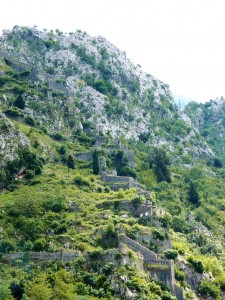 The group conducted a pretty thorough tour of the main sites of the country today.
The group conducted a pretty thorough tour of the main sites of the country today.
First back into the mountains to see the the ‘seas of stone’; the limestone pavements that fill the remote and high valleys.
 This led us to Cetinje, the old mountain capital where the rulers fled when the Ottomans threw them off the habitable parts. It’s now a small and quiet mountain village but the streets are lined with 19th century embassies of Britain, Russia, France and Austro-Hungary and the houses of the short-lived Montenegro monarchy.
This led us to Cetinje, the old mountain capital where the rulers fled when the Ottomans threw them off the habitable parts. It’s now a small and quiet mountain village but the streets are lined with 19th century embassies of Britain, Russia, France and Austro-Hungary and the houses of the short-lived Montenegro monarchy.
There are oddities like an icon supposedly painted by St Luke, a tennis court-sized 3D model of the entire country presented by one of the neighbouring empires and a relic-strewn monastery where crowds of devout locals kissed pretty well anything they could reach: icons, door lintels, picture frames, sarcophagi… It’s clearly a moving place for Montenegrans with historic and religious resonances.
After that a visit to a ham smoker and some tastings before dropping down the mother of all hairpin roads for a view over the fjord.
 This took us to Kotor, a walled lakeside town that could have been in northern Italy. Numerous piazzas, renaissance palazzos, churches and narrow streets. And a wall that climbed halfway up the hill.
This took us to Kotor, a walled lakeside town that could have been in northern Italy. Numerous piazzas, renaissance palazzos, churches and narrow streets. And a wall that climbed halfway up the hill.
Then on to the beach resort of Budva; a centre for Russian investment in holiday accommodation. If you ignore the cranes and new build there’s an old town that resembles a little Dubrovnik. Brash and lively, the town felt like somewhere on the Italian riviera.
Finally we had a view of Sveti Stefan, the poster shot for the country. It’s a cute little island connected by a causeway and being converted into a £800pn hotel.

